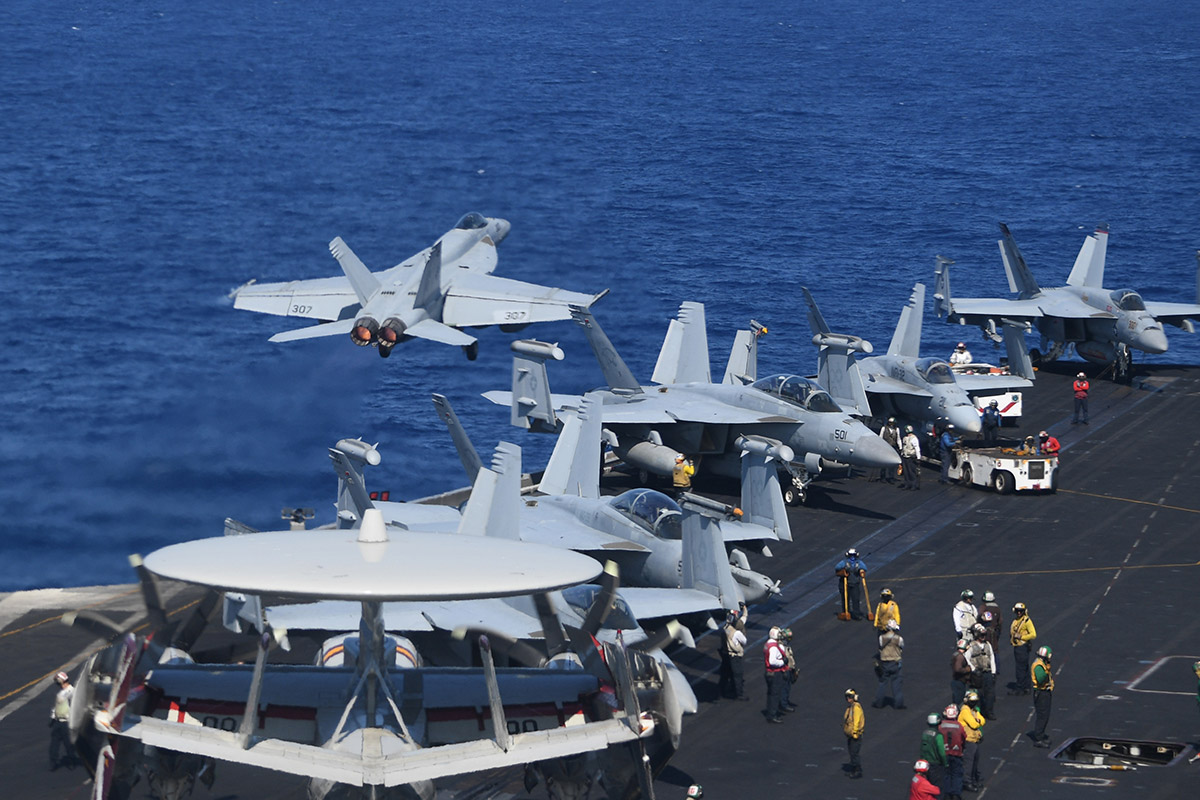Verbal warnings, strongly worded statements and freedom of navigation operations (FONOPs) – all seem to have fallen on deaf ears as Beijing continues its pursuit of militarising islands in the disputed South China Sea.
Last week during Asia’s premier defence summit, the Shangri-La Dialogue, United States (US) Secretary of Defense, James Mattis called out China for their assertive actions. He lambasted them for military installations on several disputed islands as actions aimed at “intimidation and coercion.”
Beijing is not alone in this. According to a US think tank, Asia Maritime Transparency Initiative, five countries – including China – occupy close to 70 contested reefs and islets across the maritime area. Over 90 outposts have been built on these disputed features, many of which have seen rapid expansion in recent years.
The RIMPAC snub
However, Beijing, with arguably the more superior military and economic might in the region is naturally concerned by the presence of the US. As part of a series of punitive measures aimed at Beijing’s recalcitrance towards demilitarisation, the US excluded China from this year's Rim of Pacific (RIMPAC) military exercises - the world’s largest maritime military drill. China previously attended the drills in 2014 and 2016.
Naval affairs expert, Collin Koh told The ASEAN Post that such efforts serve as a symbolic way for the US to assert its freedom as a user state in the contested waters and to display its resolve towards its longstanding security commitment to the region.
“While it may at first sight appear to be primarily intended to signal displeasure to Beijing and bring about a positive change of its behaviour in the South China Sea, the actual effect remains much debatable,” he said.
He opined that such measures will only harden Beijing’s resolve as it continues to emphasise a forceful stance on the dispute and maybe even encourage further escalation.
“If anything, Beijing sees no reason to step back and risk domestic political repercussions, and it needs to maintain the substance of Xi’s hard-line rhetoric towards the South China Sea. Moreover, stepping back will be a sign of weakness to not just the domestic but also external audience,” he added.

Source: Various sources
Koh also stressed that the disinvite will not impinge upon China’s relations with their ASEAN counterparts, some of whom had been invited to RIMPAC.
“All this while, ASEAN member states which have maintained close or significant defense and security links with the US have been carefully and prudently doing that, without sacrificing broader economic and diplomatic relations with China, even if such links are regarded warily and, in some cases, seen as a thorn in the flesh by Beijing,” he opined.
Nevertheless, China under Xi Jinping’s leadership has been intensifying efforts with ASEAN member states to strengthen military ties between them. A proposed ASEAN-China joint maritime exercise slated to take place in August this year will be an inaugural initiative in this direction.
India’s increasing maritime role
India’s geostrategic entry into the region comes within the fold of the US’ strategy for a “free and open Indo Pacific.” Indian maritime forces have long made regular deployments to Southeast Asia and will likely bolster such efforts under its current Act East policy. The Indian Navy will be attending RIMPAC 2018.
With the articulation of the region as “Indo Pacific” as opposed to “Asia Pacific,” it stretches the geography of the region to include the Indian Ocean and by extension, India into the fray. Hence, the renaming of the US Pacific Command (PACOM) as the US Indo-Pacific Command (IPACOM) could mean a bigger role for India’s navy in the region.
“We may see Indian maritime forces being present in a number of existing and new US naval engagements with Southeast Asia,” said Koh, adding that the Indian cooperation model could be similar to the Exercise Balikatan – a traditionally bilateral US-Philippine military exercise but has since expanded to include other countries like Japan and Australia.
“The Indian maritime forces could contribute to some of these exercises with their niche capabilities that could add value to the participants,” he further remarked.
With India looking to make its presence in the region felt strongly, China may find itself pressured by two forces – including the US – to toe the line with regards to their actions in this region. Given that all sides approach this geopolitical puzzle with caution and not escalate things further, it could be a positive start to ensuring Beijing begins to abide by a common rules-based order in the South China Sea.
